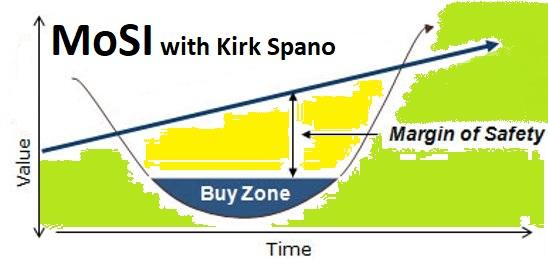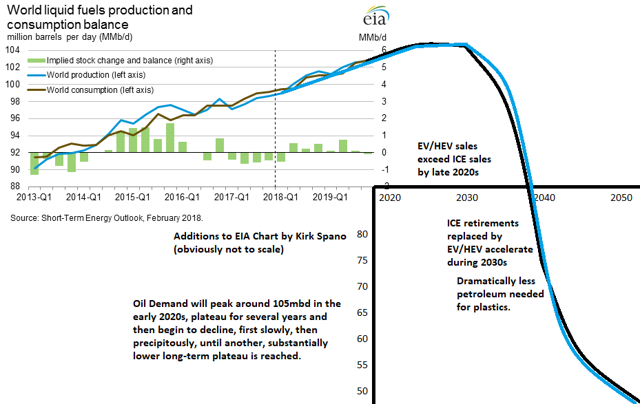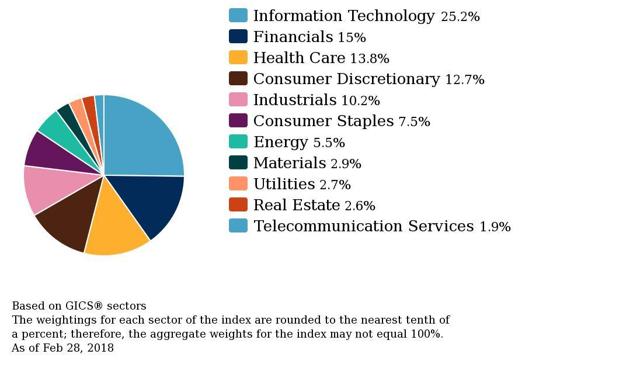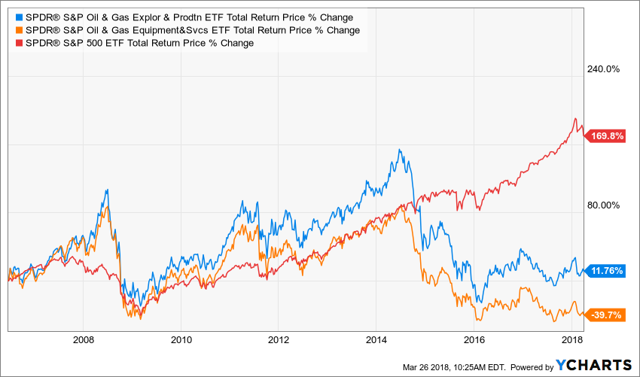7 Missiles Closer To Iran War And $100 Oil
by: Kirk Spano
- Pro-Iranian rebels fired seven missiles into Saudi Arabia this weekend.
- The missiles were intercepted, however, at least one death from debris was reported on the ground.
- This marks another escalation in the proxy wars between Iran and Saudi Arabia.
- It also demonstrates that Iran has little intention of backing off of their hegemonic ambitions in the Middle East.
- It is virtually certain that President Trump will end the nuclear deal with Iran in May and that oil prices will rise as a result of at least 500k barrels per day coming off of supply.
- The missiles were intercepted, however, at least one death from debris was reported on the ground.
- This marks another escalation in the proxy wars between Iran and Saudi Arabia.
- It also demonstrates that Iran has little intention of backing off of their hegemonic ambitions in the Middle East.
- It is virtually certain that President Trump will end the nuclear deal with Iran in May and that oil prices will rise as a result of at least 500k barrels per day coming off of supply.

[Originally published as Macro Monday piece on Margin of Safety Investing. Macro Monday pieces are published by noon each Monday for MoSI members.]
On Sunday, pro-Iranian Shiite rebels in Yemen launched a missile attack on Saudi Arabia targeting four cities. The Saudi air defense intercepted the missiles, however, one person died and two others were hurt by shrapnel.
Saudi Colonel Turki al-Malki made it clear who Saudi Arabia thought was to blame: "This aggressive and random act by the Iran-backed Houthi group proves that the Iranian regime continues to support the armed Houthi group with qualitative capabilities..."
Today's piece will be a continuation of the discussion that I began last year about an impending greater conflict within Iran. Here is the background:
For investors, the evidence adds up to being overweight oil stocks on the likelihood of disruptions to Iranian oil supply soon due to sanctions and increasingly likely military action.
From Russia Without Love
Earlier in March, the U.N. Security Council voted for a resolution that prevents Iran from providing missiles to rebels in Yemen. Russia, a permanent member of the council, vetoed that resolution much to the chagrin of the Gulf Cooperation Council nations.
At the time that action was taken, columnist Sawsan Al Shaer made a point of questioning the Russian action stating: "The question is how Russia justifies to Gulf countries the veto it exercised against the resolution that prevents Iran from supplying Houthis with weapons."
If you are in Saudi Arabia today, after another, and bigger, missile attack out of Yemen, that question is much more urgent. In the past two years, Russia and Saudi Arabia, along with the GCC, have forged more security and trade ties. But after yet another attack, this statement made by Al Shaer seems even more prescient:
Russia now stands completely against our interests and our security. We should ask Russia to clarify its position towards us. It sells weapons to us even as it sells weapons through Iran to militias that threaten us. Then it torpedoes a move to prevent it from selling the weapons that threaten us, as if it seeks to benefit at the expense of our security! This is the rationale of a war trader and not of a state that builds international relations on a sound and sustainable premise.
Despite the fact that OPEC and Russia have a deal on oil production designed to support the price of oil, Russia supports sales of missiles that threaten partners to that deal. Why would they do that?
There are two ideas here to consider, one on the surface, another slightly more complex. The first idea is that Russia simply stands by Iran. While Russia has historically supported Iran, that is a strategic decision. As history and evidence demonstrate, Russian leadership has no love for Islam.
The more complex equation, and probably closer to truth, is that by allowing an Iranian proxy to obtain missiles that threaten Saudi Arabia, the odds of greater conflict that create oil supply disruptions are higher. Clearly, Russia, which gets 30% of GDP and about half of its federal budget from hydrocarbon revenues, benefits if there is an oil supply disruption in the Middle East.
Games Nations Play
The long game in oil and natural gas is becoming shorter. The window for using oil as a primary revenue driver for oil-producing nations is down to about two decades. Saudi Arabia recognizes this through its 2030 Vision. Russia certainly also sees its window closing on oil profits as it has backed off on expensive oil projects, such as the Arctic.
Over the next couple decades, the GCC nations, Russia and now the United States, will be competing with other nations to supply a global economy with natural gas and oil. To maximize profits, there will need to be a balance between economic growth and higher sustained energy prices. To get higher sustained oil and gas prices, there will have to be some pressure on supplies. The U.S., Russia, and GCC nations want that pressure to fall on others.
So, under these circumstances, the three major oil producers must consider their actions:
- Firm oil supply
- Slowly growing demand for the short-term, followed by flat demand, followed by declining demand
- Limited time frame for profiting from oil
- Increasing Chinese (and Asian) net demand
Consider that Saudi Arabia, Russia, and the U.S. all have excess oil reserves that can be tapped. Disruptions to supply in other producing nations will allow these three to profit. At that level, their interests are aligned.
So, now we know where much of the world's oil will come from. The next key question is: where will it go?
In 2017, China overtook the U.S. as the largest importer of oil with a record 9.57 million barrels per day. China's thirst for oil is likely to grow about 4% in 2018, down from a 5.5% growth rate last year. Still, that is a significant increase in needed supplies. This is happening at a time when Chinese oil production is peaking and likely to turn over in the next few years.
As we can see from various actions, all three of the biggest producers are looking for ways to increase sales to China and Asia. Russia's Rosneft through a series of deals on debt, pipelines, and capacity increases has become China's leading oil supplier, displacing Saudi Arabia.
Aramco (Private:ARMCO) has been building its refining operations in order to gain more market share, including major investments in India, China, and the U.S. Controlling refining, of course, gives Saudi Arabia end points for its oil production and some control over distillate pricing. Aramco is targeting 10 million barrels per day of refining capacity by 2030. This is important as I have targeted that as roughly the year when relatively stable oil supply will be above what will become rapidly falling demand.
The United States is now engaged in serious trade negotiations with China under the threat of tariffs.
Last week, I suggested that a main way to reduce the U.S. trade deficit with China would be for them to agree to import more American natural gas. I am sure this is not lost on President Trump who has declared that the United States would become an "energy superpower."
So that once again raises the question: "how to control oil supplies?" Certainly, sanctioning Venezuela is one way. That's already in the works as their oil production collapses. Another way would be to sanction Iran again or destroy some of their capacity in a conflict. It is very likely that the U.S. sanctions Iran again in May. A conflict might take longer to play out, dependent on when an uprising might start or when Saudi Arabia retaliates for the missile attacks.
It should be noted and considered that Iran is the one nation suggesting raising OPEC production in 2019. They are also a major natural gas supplier to China. Controlling Iran's output would seem to be paramount to Russia, the U.S., and Saudi Arabia. Russia was a free-rider when the U.S. had sanctions on Iran. They will be a free-rider again. Aligned interests make strange bedfellows.
From $80 Oil to $100 Oil
I have previously outlined the likelihood and pathway for $80 oil this summer:
The short story is the OPEC output controls and slowly rising demand have helped reduce oil inventory globally. This lower inventory is starting to create some price inflation for oil.
Sanctions on Venezuela or Iran would assure $80 oil this summer. It is possible that oil prices could rise to near $100 temporarily before Saudi Arabia kicked in some of its 2+ mbd of excess capacity. Russia too has a bit, though much less than Saudi Arabia, excess capacity it can add.
Of course, we know that the United States is heading towards 11mbd of production by 2019.
So, any small disruptions to oil supply can be absorbed rather quickly by the three major producers.
In the case of war, where outcomes are less known, oil could surge well past $100 per barrel. One newsletter has recently been touting $500 per barrel oil. I think that's clearly extreme, but makes the point, that supply disruptions would have an impact at least short term. I see an oil supply disruption as something that shifts where supply is coming from.
The reason we won't see oil prices much past $100 per barrel in the event of war is that if need be, oil supply can be brought on within a year or two from several other nations, pending assistance from the oil majors and relevant governments. Canada, for example, is a couple stalled pipelines away from being able to add a half million barrels per day to global supply. Brazil, Mexico, Angola, Nigeria, Libya all could add to global supply if the powers that be were motivated to see that happen.
So, while oil is surely headed a bit higher, it is not going to soar as that would cause a severe recession and nobody wants that. All the parties involved are motivated to see oil around $80 per barrel, the Goldilocks price.
Build Your Own Oil & Gas ETF
With oil and gas prices likely to rise to a new trading range and some value in the energy space in a broader stock market where it is hard to find value, adding to your energy asset allocation is advisable. The S&P 500 (SPY) (VOO) representation for the energy sector is down to 5.5% which is a multiyear low.
I am recommending a 15-25% overweight to energy for the next 2-4 years. The temptation is to add ETF exposure. That's not a bad idea. I have on a few occasions suggested buying the Energy Select Sector SPDR (XLE), SPDR S&P Oil & Gas Exploration & Production (XOP), and SPDR S&P Oil & Gas Equipment & Services (XES) ETFs which have been beaten up relative to the stock market. You can certainly buy these ETFs now.
However, there is a better idea for those who are buying individual stocks. Build your own personalized ETF of top energy space companies. Here are the companies on the Margin of Safety Investing "Very Short List." The "VSL" is a list of companies I believe can lead in the next decade.
All of these are buys right now in my opinión.
Energy Stocks To Buy
| Andeavor (ANDV) | Refining - merger or Tesoro & Western Refining |
| Antero Resources (AR) | Natural Gas E&P - serving the east coast, benefiting from U.S. natural gas exports and a takeover target |
| Chesapeake Energy Corp. (CHK) | Oil & Gas E&P - high risk due to debt, however, if oil prices do rise, likely to see dramatically higher free cash flow after next asset sale. |
| Encana (ECA) | Oil & Gas E&P - very cleaned up balance sheet with exposure to 4 great plays including Permian, a takeover target, potentially by Royal Dutch Shell (RDS.A) who described looking for a company that fits Encana's profile. |
| Helmerich & Payne (HP) | Oil & Gas Services & Equipment - America's largest land driller and sporting a fat secure 4.2% dividend yield. |
| Kinder Morgan (KMI) | Pipelines - the largest natural gas pipeline company in America with a rising dividend after cleaning itself up after oil crash. |
| Occidental Petroleum (OXY) | Oil & Gas E&P - largest producer in the Permian with diversified assets. Speculative rumored takeover target by Exxon (XOM). 3% dividend. |
| Pioneer Natural Resources (PXD) | Oil & Gas E&P - moving towards being the largest Permian Basin pure play. Selling assets short-term, cash flow machine or takeover target intermediate term. |



0 comments:
Publicar un comentario